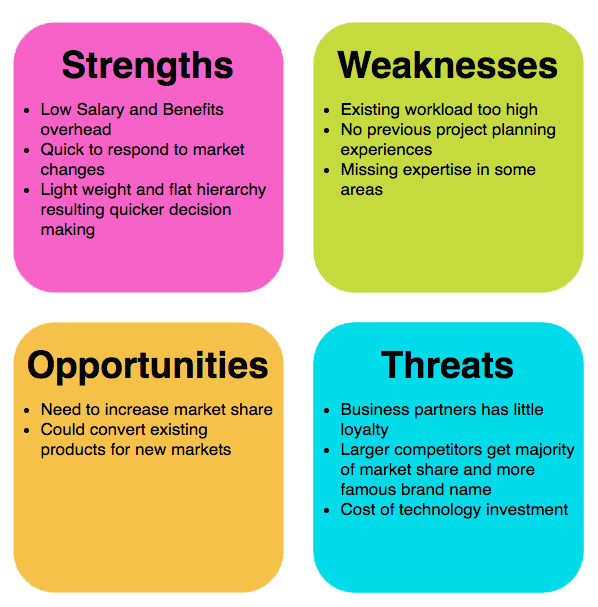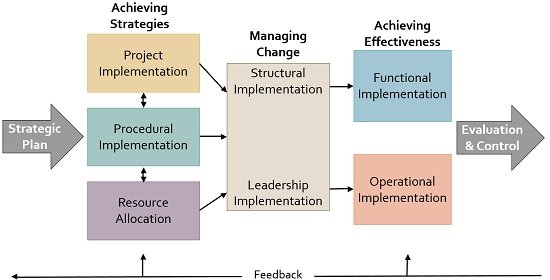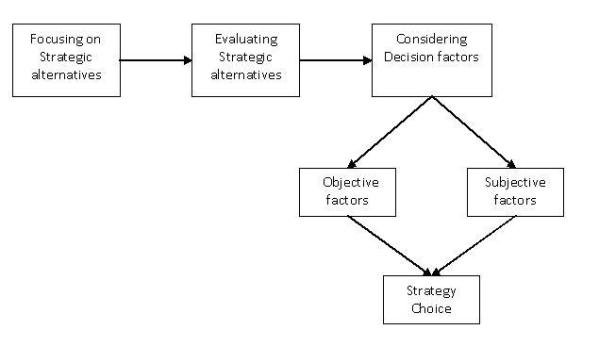Components of environment & Environmental analysis
Environmental Analysis is described as the process which examines all the components, internal or external, that has an influence on the performance of the organization. The internal components indicate the strengths and weakness of the business entity whereas the external components represent the opportunities and threats outside the organization.
To perform environmental analysis, a constant stream of relevant information is required to find out the best course of action. Strategic Planners use the information gathered from the environmental analysis for forecasting trends for future in advance. The information can also be used to assess operating environment and set up organizational goals.
It ascertains whether the goals defined by the organization are achievable or not, with the present strategies. If is not possible to reach those goals with the existing strategies, then new strategies are devised or old ones are modified accordingly.

Some of the features or characteristics of Environmental Analysis are:
- Holistic View: Environmental Analysis is a holistic exercise in the sense that it must comprise a total view of the environment rather than viewing a trend piecemeal. The corporate must scan the circumference of its environment in order to minimize the chances of surprises and to maximize its utility.
- Continuous Process: The analysis of environment must be a continuous process rather than being an intermittent scanning system. It must operate continuously in order to keep track of the rapid pace of development. So, Environmental analysis becomes essential due to the dynamic nature of the environment.
- Exploratory Process: While the Monitoring aspect of the environment is concerned with the present development, a large part of the process seeks to explore the unknown dimensions of possible future. The analysis emphasizes on “What could happen” and not necessarily “What will happen.”
The Importance of Environmental Analysis are:
- First Mover Advantage: Awareness of environment helps an enterprise to take advantage of early opportunities instead of losing them to competitors. For instance, Maruti Udyog became the leader in the small car market because it was the first to recognize the need for small cars on account of rising Middle class.
- Early Warning Signal: Environmental awareness serves as an early warning signal. It makes a firm aware of the impending threat or crisis, so that the firm can take timely action to minimize the adverse effects if any. For instance, A MNC entering in to the Indian market would act as a early warning signal for Indian Firms.
- Focus On Customer: Environmental Understanding makes the management or Business organization sensitive towards the changing needs and expectations of customer. For instance, Several FMCG companies have launched small sachets of shampoo and other products realizing the wishes of customers.
- Strategy Formulation: Environmental Monitoring provides relevant information about the business environment. such information serves as the basis for strategy formulation. For Instance, ITC realized that there is a vast scope for growth in the travel and tourism industry in India and therefore ITC planned New hotels in India.
- Change Agent: Business leaders acts as the agents of change. They create a drive for change at the grassroot level. In order to decide the direction and nature of change, the leaders need to understand the aspirations of people and other environmental forces through Environmental Scanning.
- Public Image: A business firm can improve its image by showing that it is sensitive to its environment and responsive to the aspirations of public. Environmental understanding enables the business to be responsive to their environment.
- Continuous Learning: Environmental analysis keeps the organization in touch with the changing scenario so that thet are never caught unaware. With the help of Environmental learning, managers can react in an appropriate manner and thereby increase the success of their organization.
The Process of Environmental Analysis/Scanning consists of the following steps:
- Environmental Scanning: It means the process of analyzing the environment for identifying the factors which may influence the business. Environmental Scanning alerts an organization to potentially significant forces in the external environment, so that suitable strategic initiatives may be taken before the organization reaches to a critical situation.
- Environmental Monitoring: At this stage, the information from the relevant environment is collected. Once this information is collected, adequate data is gathered so as to find out the patterns and trends of the environment. Further Monitoring is a follow up and deeper analysis of environmental forces. Several techniques such as company records, spying, publication and verbal talks with the customers, employees, dealers and suppliers are the main sources of collecting data.
- Environmental Forecasting: Environmental Forecasting is the process of estimating the events of future based on the analysis of past records and present behavior. Further it is necessary to analyze or anticipate the future events before any strategic plans are formulated. Forecasts are made for economic, social and political factors. Several techniques such as Time series, Graph method, Delphi method etc. are used for this purpose.
- Assessment Or Diagnosis: At this stage, Environmental factors are assessed in terms of their impact on the organization. Some factors in the environment may entail an opportunity while others may pose a threat yo the organization. For this purpose, SWOT analysis and ETOP analysis are used.
Advantages of Environmental Analysis
The internal insights provided by the environmental analysis are used to assess employee’s performance, customer satisfaction, maintenance cost, etc. to take corrective action wherever required. Further, the external metrics help in responding to the environment in a positive manner and also aligning the strategies according to the objectives of the organization.
Environmental analysis helps in the detection of threats at an early stage, that assist the organization in developing strategies for its survival. Add to that, it identifies opportunities, such as prospective customers, new product, segment and technology, to occupy a maximum share of the market than its competitors.
Steps Involved in Environmental Analysis
- Identifying: First of all, the factors which influence the business entity are to be identified, to improve its position in the market. The identification is performed at various levels, i.e. company level, market level, national level and global level.
- Scanning: Scanning implies the process of critically examining the factors that highly influence the business, as all the factors identified in the previous step effects the entity with the same intensity. Once the important factors are identified, strategies can be made for its improvement.
- Analysing: In this step, a careful analysis of all the environmental factors is made to determine their effect on different business levels and on the business as a whole. Different tools available for the analysis include benchmarking, Delphi technique and scenario building.
- Forecasting: After identification, examination and analysis, lastly the impact of the variables is to be forecasted.
Environmental analysis is an ongoing process and follows a holistic approach, that continuously scans the forces effecting the business environment and covers 360 degrees of the horizon, rather than a specificsegment.



